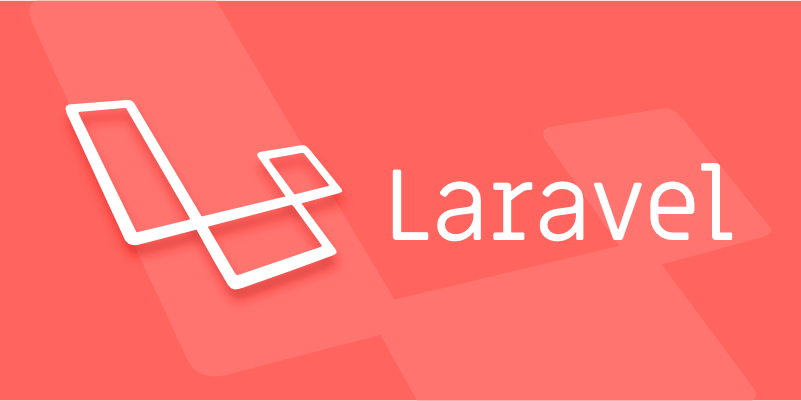Customize the Handler.php class by modifying the report() method to log or notify on specific exceptions and the render() method to return custom responses, such as JSON for APIs; 2. Optionally create custom exceptions like InvalidOrderException using php artisan make:exception and handle them in render() to provide domain-specific error formatting; 3. Use middleware like HandleApiErrors for route-specific error handling by wrapping the request in a try-catch block and returning standardized error responses; 4. Enhance error reporting by integrating logging channels or sending notifications via the report() method, for example, emailing admins on critical errors using Laravel's Notification system; the central and recommended approach is to extend Laravel’s built-in App\Exceptions\Handler class to meet application-specific needs.

In Laravel, handling errors gracefully is essential for building robust applications. By default, Laravel comes with a solid error handling system through the App\Exceptions\Handler class. However, you may want to create a custom error handler to log specific errors, send notifications, format API responses, or handle certain exceptions differently.

Here’s how you can create and customize an error handler in Laravel:
1. Modify the Default Exception Handler
Laravel uses the App\Exceptions\Handler class to manage all exceptions. This is where you should make most of your customizations.

Open the file:
app/Exceptions/Handler.php
This class contains two main methods:

report(): Used to log or send the exception to an external service.render(): Converts the exception into an HTTP response.
Example: Customize Exception Reporting
use Illuminate\Auth\AuthenticationException;
use Illuminate\Http\Request;
public function report(Exception $exception)
{
if ($exception instanceof CustomException) {
// Log to a specific channel or send to Slack, etc.
\Log::channel('error_log')->error($exception);
}
parent::report($exception);
}Example: Customize Exception Rendering
protected function unauthenticated($request, AuthenticationException $exception)
{
if ($request->expectsJson()) {
return response()->json(['error' => 'Unauthenticated.'], 401);
}
return redirect()->guest(route('login'));
}
public function render($request, Exception $exception)
{
if ($exception instanceof ModelNotFoundException) {
return response()->json([
'error' => 'Resource not found'
], 404);
}
return parent::render($request, $exception);
}2. Create Custom Exceptions (Optional)
You can define your own exception classes for better control.
Generate a custom exception:
php artisan make:exception InvalidOrderException
Then use it in your code:
throw new InvalidOrderException('The order is not valid.');Handle it in the Handler.php:
use App\Exceptions\InvalidOrderException;
public function render($request, Exception $exception)
{
if ($exception instanceof InvalidOrderException) {
return response()->json([
'error' => 'Order error',
'message' => $exception->getMessage()
], 422);
}
return parent::render($request, $exception);
}3. Register Custom Handlers via Middleware (Advanced)
If you need request-specific error handling (e.g., per route), you can use middleware:
php artisan make:middleware HandleApiErrors
In the middleware:
public function handle($request, Closure $next)
{
try {
return $next($request);
} catch (Exception $e) {
return response()->json([
'error' => 'API error occurred',
'message' => $e->getMessage()
], 500);
}
}Apply this middleware to specific routes or groups.
?? Note: This approach catches exceptions before they reach the global handler, so use carefully.
4. Logging and Notifications
You can also send alerts for critical errors:
use Illuminate\Support\Facades\Notification;
use App\Notifications\ErrorOccurred;
public function report(Exception $exception)
{
if ($this->shouldReport($exception)) {
Notification::route('mail', 'admin@example.com')
->notify(new ErrorOccurred($exception));
}
parent::report($exception);
}Make sure to create the notification class accordingly.
Summary
- Use
app/Exceptions/Handler.phpas your central error handling point. - Override
report()to log or notify. - Override
render()to customize responses (especially useful for APIs). - Create custom exceptions for domain-specific errors.
- Use middleware only when you need localized error handling.
Basically, you don’t need a separate “custom error handler” service—Laravel’s built-in Handler class is designed to be extended. Just tailor it to your app’s needs.
The above is the detailed content of How to create a custom error handler in Laravel?. For more information, please follow other related articles on the PHP Chinese website!

Hot AI Tools

Undress AI Tool
Undress images for free

Undresser.AI Undress
AI-powered app for creating realistic nude photos

AI Clothes Remover
Online AI tool for removing clothes from photos.

Clothoff.io
AI clothes remover

Video Face Swap
Swap faces in any video effortlessly with our completely free AI face swap tool!

Hot Article

Hot Tools

Notepad++7.3.1
Easy-to-use and free code editor

SublimeText3 Chinese version
Chinese version, very easy to use

Zend Studio 13.0.1
Powerful PHP integrated development environment

Dreamweaver CS6
Visual web development tools

SublimeText3 Mac version
God-level code editing software (SublimeText3)
 Working with pivot tables in Laravel Many-to-Many relationships
Jul 07, 2025 am 01:06 AM
Working with pivot tables in Laravel Many-to-Many relationships
Jul 07, 2025 am 01:06 AM
ToworkeffectivelywithpivottablesinLaravel,firstaccesspivotdatausingwithPivot()orwithTimestamps(),thenupdateentrieswithupdateExistingPivot(),managerelationshipsviadetach()andsync(),andusecustompivotmodelswhenneeded.1.UsewithPivot()toincludespecificcol
 Sending different types of notifications with Laravel
Jul 06, 2025 am 12:52 AM
Sending different types of notifications with Laravel
Jul 06, 2025 am 12:52 AM
Laravelprovidesacleanandflexiblewaytosendnotificationsviamultiplechannelslikeemail,SMS,in-appalerts,andpushnotifications.Youdefinenotificationchannelsinthevia()methodofanotificationclass,andimplementspecificmethodsliketoMail(),toDatabase(),ortoVonage
 Understanding Dependency Injection in Laravel?
Jul 05, 2025 am 02:01 AM
Understanding Dependency Injection in Laravel?
Jul 05, 2025 am 02:01 AM
Dependency injection automatically handles class dependencies through service containers in Laravel without manual new objects. Its core is constructor injection and method injection, such as automatically passing in the Request instance in the controller. Laravel parses dependencies through type prompts and recursively creates the required objects. The binding interface and implementation can be used by the service provider to use the bind method, or singleton to bind a singleton. When using it, you need to ensure type prompts, avoid constructor complications, use context bindings with caution, and understand automatic parsing rules. Mastering these can improve code flexibility and maintenance.
 Strategies for optimizing Laravel application performance
Jul 09, 2025 am 03:00 AM
Strategies for optimizing Laravel application performance
Jul 09, 2025 am 03:00 AM
Laravel performance optimization can improve application efficiency through four core directions. 1. Use the cache mechanism to reduce duplicate queries, store infrequently changing data through Cache::remember() and other methods to reduce database access frequency; 2. Optimize database from the model to query statements, avoid N 1 queries, specifying field queries, adding indexes, paging processing and reading and writing separation, and reduce bottlenecks; 3. Use time-consuming operations such as email sending and file exporting to queue asynchronous processing, use Supervisor to manage workers and set up retry mechanisms; 4. Use middleware and service providers reasonably to avoid complex logic and unnecessary initialization code, and delay loading of services to improve startup efficiency.
 Managing database state for testing in Laravel
Jul 13, 2025 am 03:08 AM
Managing database state for testing in Laravel
Jul 13, 2025 am 03:08 AM
Methods to manage database state in Laravel tests include using RefreshDatabase, selective seeding of data, careful use of transactions, and manual cleaning if necessary. 1. Use RefreshDatabasetrait to automatically migrate the database structure to ensure that each test is based on a clean database; 2. Use specific seeds to fill the necessary data and generate dynamic data in combination with the model factory; 3. Use DatabaseTransactionstrait to roll back the test changes, but pay attention to its limitations; 4. Manually truncate the table or reseed the database when it cannot be automatically cleaned. These methods are flexibly selected according to the type of test and environment to ensure the reliability and efficiency of the test.
 Choosing between Laravel Sanctum and Passport for API authentication
Jul 14, 2025 am 02:35 AM
Choosing between Laravel Sanctum and Passport for API authentication
Jul 14, 2025 am 02:35 AM
LaravelSanctum is suitable for simple, lightweight API certifications such as SPA or mobile applications, while Passport is suitable for scenarios where full OAuth2 functionality is required. 1. Sanctum provides token-based authentication, suitable for first-party clients; 2. Passport supports complex processes such as authorization codes and client credentials, suitable for third-party developers to access; 3. Sanctum installation and configuration are simpler and maintenance costs are low; 4. Passport functions are comprehensive but configuration is complex, suitable for platforms that require fine permission control. When selecting, you should determine whether the OAuth2 feature is required based on the project requirements.
 Implementing Database Transactions in Laravel?
Jul 08, 2025 am 01:02 AM
Implementing Database Transactions in Laravel?
Jul 08, 2025 am 01:02 AM
Laravel simplifies database transaction processing with built-in support. 1. Use the DB::transaction() method to automatically commit or rollback operations to ensure data integrity; 2. Support nested transactions and implement them through savepoints, but it is usually recommended to use a single transaction wrapper to avoid complexity; 3. Provide manual control methods such as beginTransaction(), commit() and rollBack(), suitable for scenarios that require more flexible processing; 4. Best practices include keeping transactions short, only using them when necessary, testing failures, and recording rollback information. Rationally choosing transaction management methods can help improve application reliability and performance.
 Handling HTTP Requests and Responses in Laravel.
Jul 16, 2025 am 03:21 AM
Handling HTTP Requests and Responses in Laravel.
Jul 16, 2025 am 03:21 AM
The core of handling HTTP requests and responses in Laravel is to master the acquisition of request data, response return and file upload. 1. When receiving request data, you can inject the Request instance through type prompts and use input() or magic methods to obtain fields, and combine validate() or form request classes for verification; 2. Return response supports strings, views, JSON, responses with status codes and headers and redirect operations; 3. When processing file uploads, you need to use the file() method and store() to store files. Before uploading, you should verify the file type and size, and the storage path can be saved to the database.






